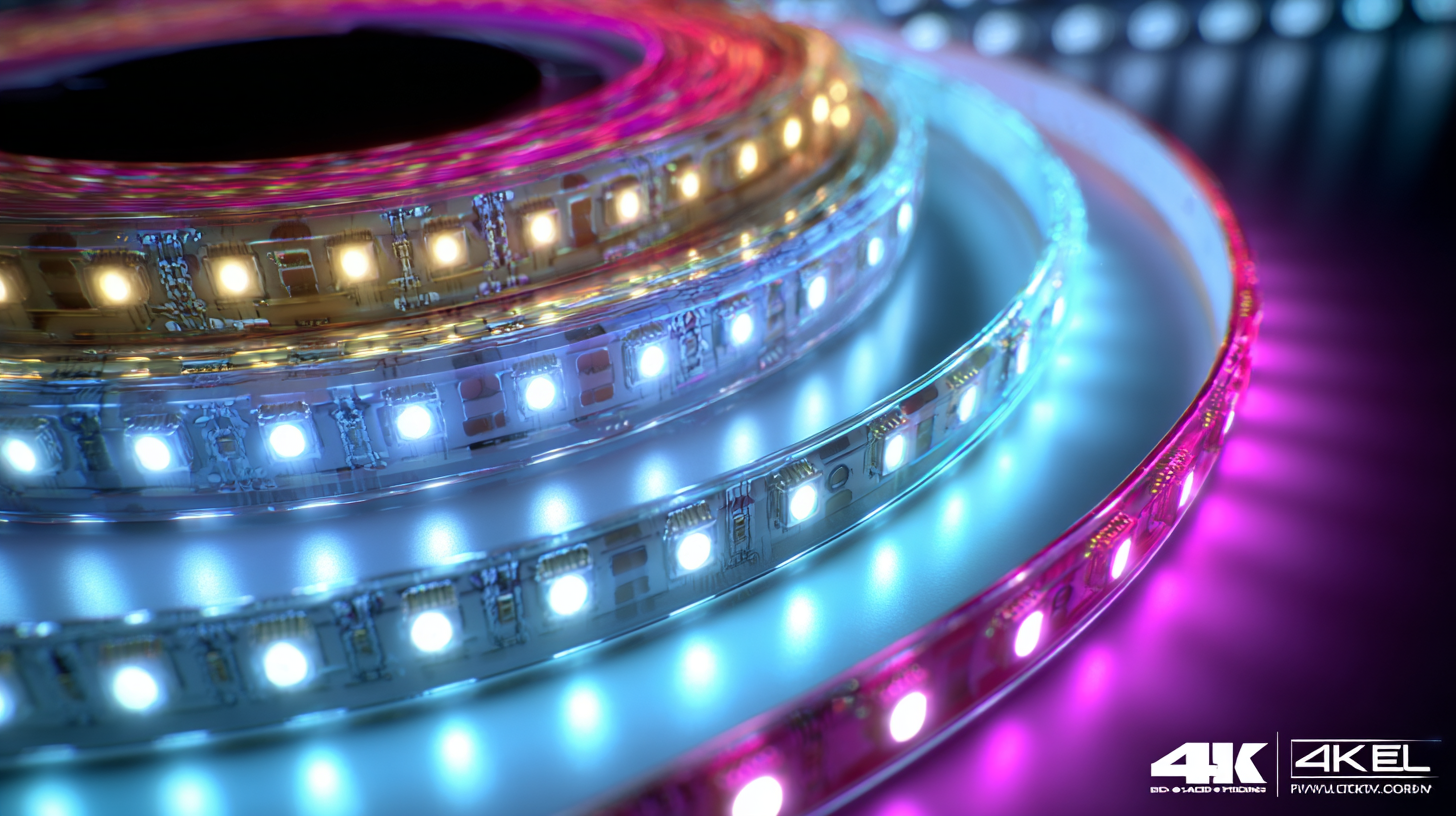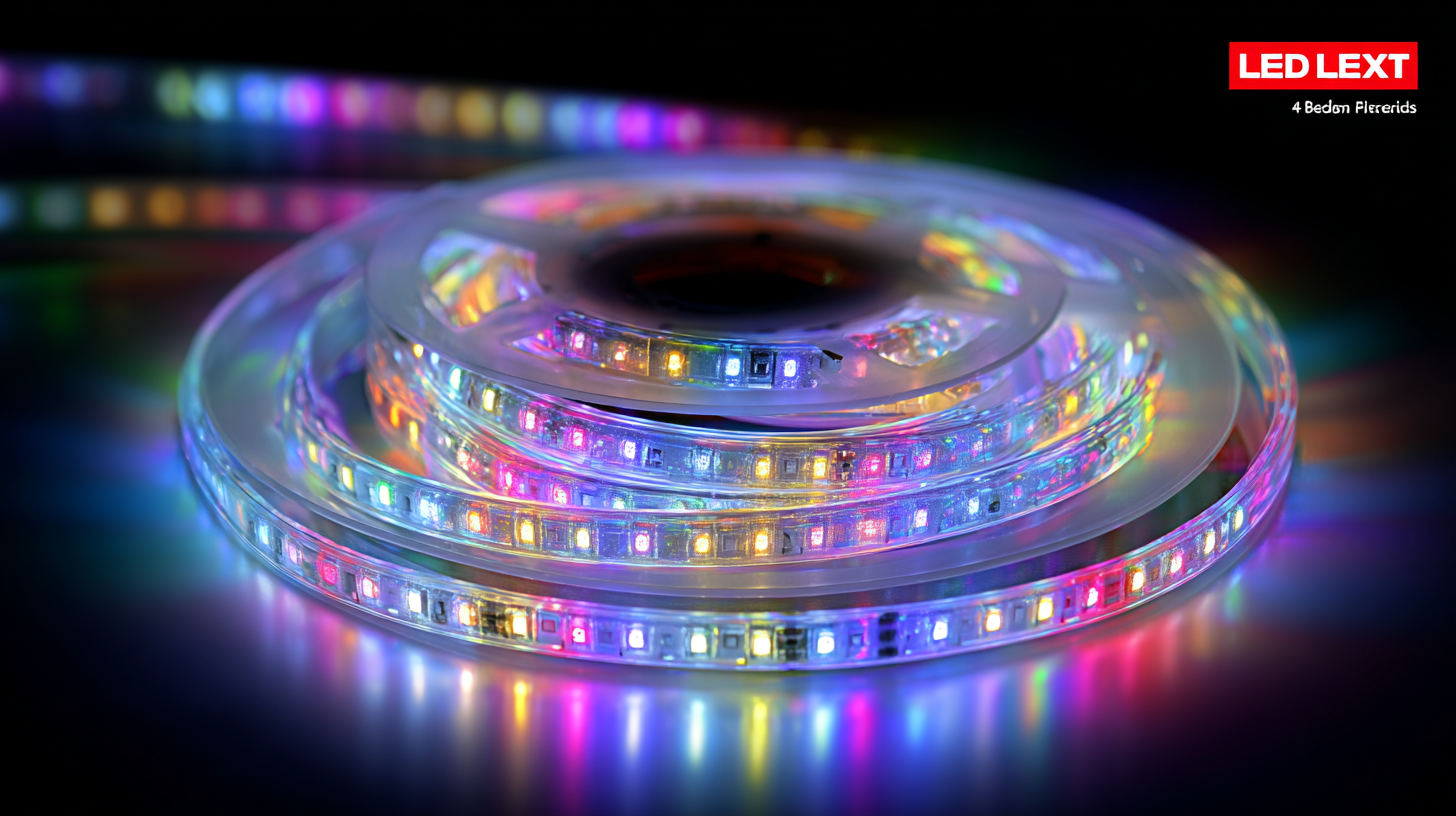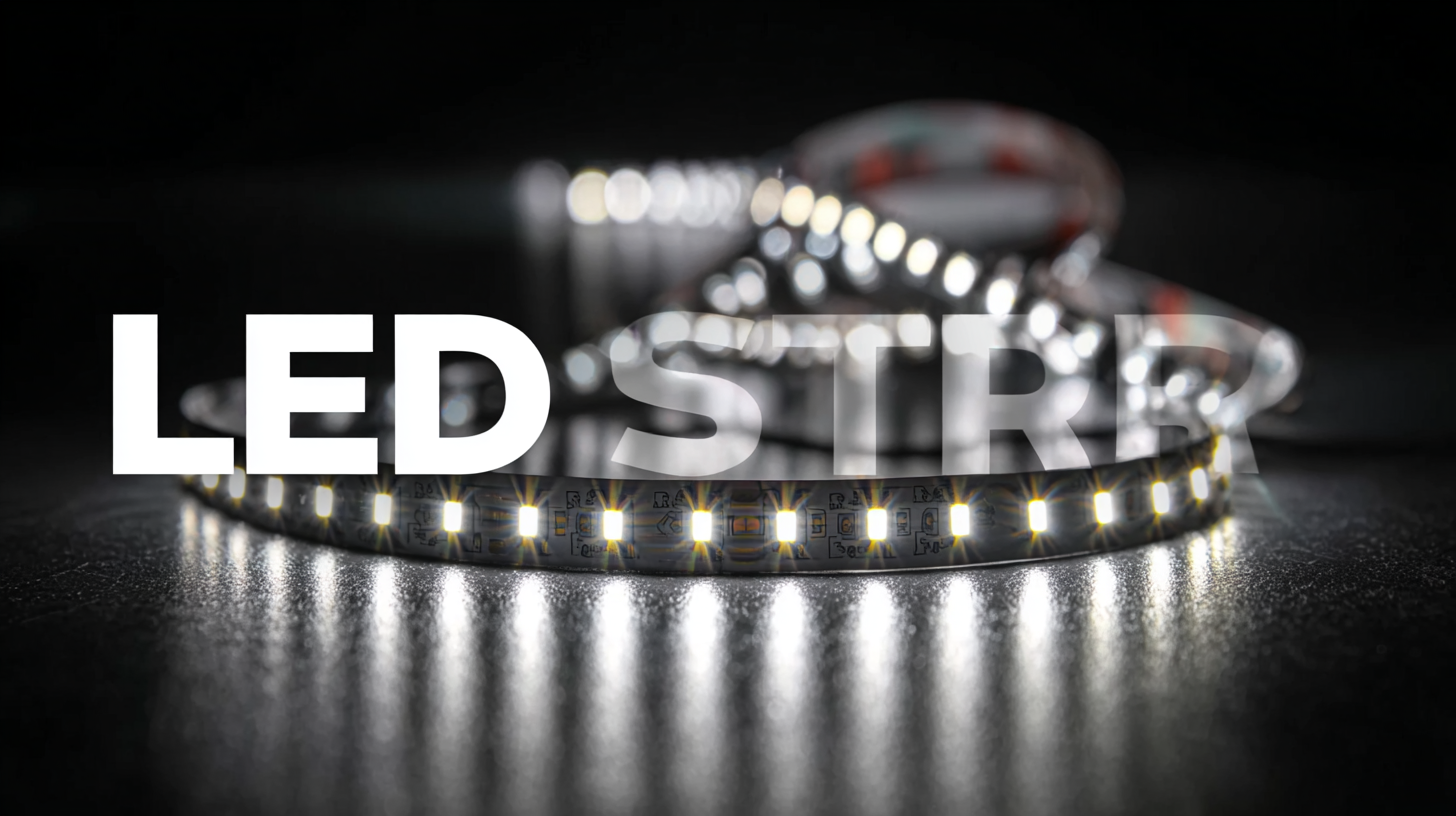

In an increasingly competitive business landscape, choosing the right lighting solution can significantly impact both aesthetic appeal and operational efficiency. LED strips, known for their versatility and energy efficiency, have emerged as a preferred lighting option for various industries. According to a report by the U.S. Department of Energy, the widespread adoption of LED lighting could save up to 190 terawatt-hours of electricity by 2025, which translates to over $15 billion in savings. Additionally, the global LED strip market is projected to reach $3.3 billion by 2026, underscoring the growing demand for these innovative lighting solutions. Selecting the best LED strip for your business is not merely a decorative choice; it can lead to enhanced energy efficiency, reduced costs, and improved ambiance, making it a critical factor in your overall business strategy.

When selecting the right LED strip for business applications, it's crucial to consider several key factors that can significantly impact your overall effectiveness and efficiency. First and foremost, lumens output is essential; higher lumens indicate brighter light, which is vital for visibility in commercial settings. According to the U.S. Department of Energy, businesses can reduce lighting energy consumption by 40% or more when transitioning to LED technology. This not only saves on utility bills but also enhances the working environment for employees and customers alike.
Another key factor is color temperature, which affects the mood and atmosphere of your space. For retail environments, warmer color temperatures (3000K-4000K) can make products more appealing, while cooler temperatures (5000K-6500K) are often better suited for office spaces to promote alertness and productivity. Tips for selecting LED strips include evaluating the specific ambiance you want to create and choosing a luminaire with a high Color Rendering Index (CRI) for better color accuracy.
Lastly, consider the strip's durability and warranty. Businesses face unique challenges, such as varying weather conditions for outdoor applications or the need for high-usage lighting in busy areas. Opting for LED strips with robust ratings and warranties can provide peace of mind in your investment, ensuring long-term performance without frequent replacements, thereby aligning with sustainability goals and reducing waste over time.

When selecting LED strips for your business needs, understanding the different types available is crucial. LED strips come in various configurations, including single-color, RGB (red, green, blue), and RGBW (red, green, blue, white) options. Single-color strips are excellent for creating a consistent and uniform lighting effect, ideal for tasks that require focus, such as in retail settings or workshops. On the other hand, RGB strips offer versatility and atmosphere, allowing businesses to change colors according to different occasions or branding needs, making them popular in restaurants and entertainment venues.

Another important distinction is the brightness and density of the LED chips used in the strips. High-density LED strips emit more light per foot, making them suitable for areas needing strong illumination. In contrast, low-density strips are beneficial for subtle accent lighting. Additionally, factors such as waterproof ratings and adhesive backing can impact the effectiveness of LED strips in specific environments. For instance, waterproof strips are necessary for outdoor installations, while adhesive backing helps with easy and secure mounting in various locations. When selecting the best LED strip for your business, it’s essential to consider these aspects to ensure you meet your lighting requirements effectively.
Choosing high-quality LED strips for your business can significantly enhance energy efficiency, leading to notable cost savings over time. Unlike traditional lighting options, quality LED strips consume less electricity while providing brighter illumination. This lower power consumption not only reduces your monthly energy bills but also helps lower your overall operational costs. Additionally, many high-end LED strips have longer lifespans, leading to fewer replacements and minimizing maintenance costs.
**Tips for maximizing energy efficiency with LED strips: 1. Opt for dimmable LED strips:** Incorporating dimming capabilities allows you to adjust the brightness based on your needs, reducing energy usage when full illumination isn't necessary. 2. Consider color temperature:** Warmer color temperatures can create a cozy atmosphere, while cooler temperatures are suitable for task-oriented spaces. Choose the right hue to avoid excess energy use while still meeting your aesthetic goals.
Investing in the best LED strips also means leveraging advanced technologies like motion sensors and smart controls. **Tip:** Using motion sensors can ensure that lights only activate when needed, further conserving energy. Smart controls allow you to program lighting based on usage patterns, ensuring you are always operating at peak efficiency.
| Feature | Standard LED Strip | Quality LED Strip | Cost Savings Over 5 Years |
|---|---|---|---|
| Lifespan | 20,000 hours | 50,000 hours | $200 |
| Energy Consumption (W/m) | 12W | 8W | $150 |
| Brightness (Lumens/m) | 800 | 1200 | N/A |
| Temperature Range (°C) | -20 to 60 | -30 to 70 | N/A |
| Estimated Total Cost (Installation + 5-Year Energy) | $600 | $400 | $200 |
In the rapidly evolving world of business, choosing the right LED strip lighting can significantly enhance both aesthetics and functionality. Custom LED solutions allow businesses to create a unique atmosphere tailored to their brand identity, making spaces more inviting and efficient. For instance, the global human-centric lighting market is expected to grow significantly, projected to reach $3.45 billion in 2023, emphasizing the demand for lighting that promotes well-being and productivity in various settings.
When considering custom LED solutions, it's essential to keep a few tips in mind. First, evaluate the specific needs of your space—whether it's for commercial, educational, or residential use—as this will guide your choice of color temperature and brightness levels. Additionally, consider energy efficiency; choosing LED strips that are not only aesthetically pleasing but also energy-efficient can significantly reduce operational costs and environmental impact.
Moreover, integrating dynamic lighting solutions can transform vehicle interiors and public spaces alike. Reports indicate that the North America outdoor deck lighting market is projected to grow to $1.56 billion by 2033, showcasing the trend toward innovative design in leisure and commercial environments. By leveraging the latest in LED technology, businesses can enhance customer experiences while optimizing functionality in their spaces.
When integrating LED strip lighting into your business, careful installation is key to achieving optimal results. A recent report by the Department of Energy indicates that LEDs use at least 75% less energy and last 25 times longer than incandescent lighting, making them not just energy-efficient, but also a wise investment. To ensure seamless integration, it’s essential to first assess the specific needs of your space. Understanding your lighting requirements can guide you in selecting the right type of LED strip, whether it's for accent lighting, task lighting, or general illumination.
Proper installation starts with the right tools and methods. For example, ensuring a clean surface for adhesion can significantly enhance the longevity of the LED strips. Additionally, using compatible dimmers can provide flexibility in lighting intensity, which is particularly beneficial in environments like retail shops where mood lighting can influence customer behavior. According to a study published in the Journal of Lighting Research, optimal lighting can increase sales by up to 20%, highlighting the importance of both strategic placement and professional installation in leveraging LED technology to its fullest potential.